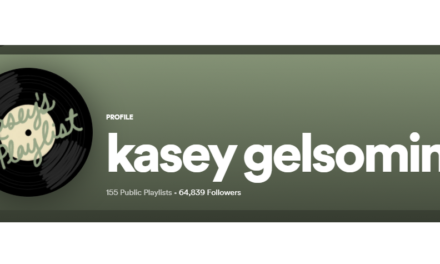According to Elon Musk, “If you are not failing, you are not innovating enough.” But many organizational cultures still fear failure, so it creates a vicious cycle. Do you dare to fail or even admit failure? Do you take step-change risks or take a series of measured, small, safe bets and then risk being disrupted by a brave new competitor? How can you adopt a business culture that fosters an innovative and customer experience (CX)-focused environment?
The holy grail right now is CX. The “Digital Marketing Trends” report from Adobe and Econsultancy is a study of organizational attitudes to new marketing opportunities. For the last 3 years, the most exciting opportunity has been CX. And nowhere is this more important than on our most personal device—the mighty mobile. It’s a device we carry with us that contains our most precious memories (videos and photos) and important information. It is the key to productivity and entertainment when we are on the move. Mobile is the Swiss army knife for life, and when a brand fails here, it fails in the most epic way possible.
Think for a minute about the seismic shift technology has created in CX over the last few years. We are only really getting started on creating services that solve customer problems, rather than applying technology to brand opportunities.
Uber: Leadership in Mobile CX
The rapid global adoption of the smartphone has generated many billion-dollar startups (such as AirBNB, Tinder, and Uber) that offer a better experience than previously existed in a way that is immediate, personal, and location-aware. Each of these brands has positioned the mobile CX at the center of its ecosystem. For each of them, customers return time and time again, because the experience is excellent and makes their life better, easier, cheaper, or more fun.
Each has broken down the steps from the desktop age and completely reinvented the process for the modern-day mobile age. The mobile age saw Uber, for example, create a simple two- or three-step process from a 10-stage desktop process. With a wearable experience, it is one step. The very act of paying for an Uber is to do nothing whatsoever. You just get out of the car, and the payment is automatic. You can give an optional review once you are out of the car. That’s it.
Defining CX
CX is defined in multiple ways online, but I like to think of it as the outcome of an interaction between an organization and a customer throughout the lifetime of the relationship. These CX interactions are similar to molecules—there is a multitude of them, almost microscopic at times, both good and bad—and they can last a microsecond or last a lifetime. Interaction can include larger behaviors (such as awareness, discovery, renewal, advocacy, purchases, subscriptions, and service), as well as micro-behaviors (such as sharing content or text-?message reminders).
In our mobile world, elevating the customer experience on mobile is key. Think of how mobile connects the user to your brand in a personal way. How can we help the user to save time and start to use mobile as the connecting tissue between your customer channels?
A word of warning: Customer behavior is the biggest driver of change. Technology in isolation is an enabler of new possibilities. It’s quite common for people to behave like birds attracted to a shiny new object. This is why companies need to look beyond technology to the value or opportunity in a relationship—or the goal or unmet need of your audience—unlocking new potential.
With CX being the hottest ticket in town, you should start by making it your top priority, building better service design experiences that make your customers’ lives easier. The ROIs in CX are self-evident. Fast Company’s list of the most innovative companies are all focused on CX. These companies put customer-centric solutions at the heart of the business. Their ability to create innovative CXs enables them to make better products.
Getting Practical: Workshop Techniques
First, a simple way to improve CX is to workshop internally or with a partner. For example, customer persona creation can work well in defining a range of audience pen portraits and helps avoid creating services in your own image.
Second, another great workshop technique is to create a customer journey map that identifies all customer interactions with your business from the customer’s point of view. By understanding the specific devices, touchpoints, and pain points—both online and offline—this technique is a great way to determine if your initiatives will help improve CX.
Third, be sure to prioritize user research. “Digital Experience Technology and Delivery Priorities, 2016” outlines that “[t]o plan the technology investments necessary to transform to a digital business, you need a digital experience technology strategy that’s informed by the needs and digital behaviors of your customers.” Customer research and the resulting insights garnered are imperative. Ask your customers what they think, and secure budget for user research.
Structuring for CX Excellence
There has been another trend on the rise over the last few years, particularly in product companies such as Amazon or Apple: the chief experience officer (CXO). The CXO is responsible for enhancing the CX, operating at the board level to make customer centricity an organizational imperative. This helps differentiate brands and creates both business and shareholder value.
However, having the right board member is not enough. A culture that embraces the customer and pushes the way forward toward excellence is needed. Essentially, CX has to become part of everyone’s job description.
Mobile CX is so hard to get right because it cuts across so many organizational silos. An app may be owned by a product division, CTO, CMO, CIO, CXO, or CDO. A website accessed on a mobile device will reveal analytics showing mobile and non-mobile usage, and this may only be seen by IT or the data team. Creating a single picture of the experience across multiple departments and touchpoints is very hard. But that doesn’t mean we shouldn’t try.
Companies, such as Apple and Amazon, that are able to skillfully manage the entire CX across channels have reaped huge rewards—and so can you. Examples include improved customer satisfaction, heightened loyalty, reduced churn, and increased revenue and profits. To quote Jeff Bezos of Amazon, “We see our customers as invited guests to a party, and we are the hosts. It’s our job every day to make every important aspect of the customer experience a little bit better.”






